#mackenzie king government
Text

"Mary Churchill visits Canada," La Presse. August 11, 1943. Page 4.
---
The youngest daughter of the Prime Minister of Great Britain, Mary Churchill, accompanies her parents during their visit to Canada and currently in Quebec. She is seen in the top vignette, while attending a debutante ball at Grosvenor House in London. In addition, wearing her Territorial Service uniform, she attended the inspection of an infantry school in the north of England. On the right, like all the members of his unit. Mary does not disdain to do her own laundry.
#ville de québec#mary churchill#winston churchill#prime minister of the united kingdom#mackenzie king#mackenzie king government#prime minister of canada#canada in the british empire#quebec city#canada during world war 2#allied powers
1 note
·
View note
Text

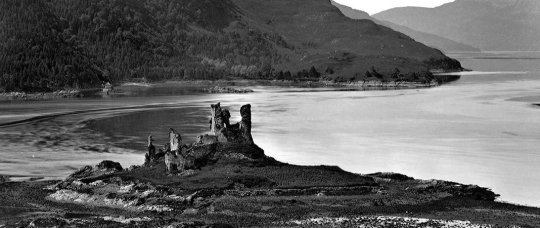

On 13th April 1719 a small Spanish force, believing itself to be part of a much larger invasion planned for England to return the Jacobites to power, landed in Loch Duich, east of the site of what is now Kyle of Lochalsh.
The little known 'Little Rising’, saw a force of 300 Spanish soldiers land and combine with less than a thousand Highlanders, under George Keith, the 10th Earl of Marischal, William Mackenzie, the 5th Earl of Seaforth Lord George Murray and John Cameron of Lochiel.
The plan had been hatched by King Philip of Spain and Italian Cardinal Alberoni as a diversion to help in the campaign to restore Spanish power and territories ceded to the British following the Treaty of Utrecht. The Spanish force should have been much larger, but much of it had been destroyed by a storm. Added to this Highlanders did not join the Jacobites in the expected numbers, However, the Jacobites made their base at Eilean Donan Castle and intended to capture Inverness. Unfortunately, Hanoverian ships shelled the castle and the only battle was at Glen Shiel two months later when the Jacobites were defeated by a Government army led by General Joseph Wightman.
This uprising is often overlooked, the only “major” action was on June 10th at the Battle of Battle of Glen Shiel, more of that in a couple of months.
A wee added note to this, it was during this time that Eilean Donan was destroyed by Government ships bombarding it the ruined castle was abandoned until 1912 when it was purchased by Lieutenant-Colonel John MacRae-Gilstrap. Rebuilding was undertaken between 1914 and 1932 and it was at this time that a bridge was built to link the island to the shore. The pics shows how the castle looked in the two centuries between these events and the restoration, and the ruin, as it was.
39 notes
·
View notes
Photo

On this day, 14 January 1942, Canadian prime minister Mackenzie King ordered the removal of all adult males of Japanese descent from the country's West Coast. The move, during World War II, was followed next month by the government approving a further order excluding all people of Japanese ancestry from 100 miles inland of the Pacific coast, breaking up families and sending 22,000 people to labour and internment camps. The ban would continue until 1949. Pictured: a Japanese man being removed saying goodbye to his family https://www.facebook.com/workingclasshistory/photos/a.296224173896073/2186587438193061/?type=3
145 notes
·
View notes
Note
I don’t know if you’ve already mentioned this Norm but how did the Office get started? Are you guys part of the US gov or are you an independent organization?
I have but I'll copy my previous explanation here for new people!
The Office for the Preservation of Normalcy was founded in 1927 at the urging of Canadian diplomats, who had already started the Royal Canadian Office of the Esoteric in 1922 as a result of the appointment of Prime Minister William Mackenzie King the previous year. King’s occult dabblings didn’t become public knowledge until decades later, but it was well known in occult circles at the time that the Prime Minister was an accomplished medium in his own right. The RCOE was modeled after the British His Majesty’s Esoteric Services, which had existed for decades at that point.
We now operate under the auspices of the US government but are given a fair amount of leeway due to the nature of our work.
21 notes
·
View notes
Text
5x10 - Safe (The Episode: My POV)
I was close to publish my expectations for this episode when spoilers released.
I am not disappointed by Nick storylines. I wanted to see him angry and loses control because Gilead would put June and Holly in danger: We got it.

There is something I do not like with Luke. When he comes into a room he did it silently, like he was spying June. He did it in S5E01 when she is with Holly in the bathroom at the end of the episode. He did it in S5E08 when June talks and then sings to Holly. And he did it again in S5E10 when June wears her bulletproof vest.
Regarding the scene where the driver is about to run over June after having run over her arm, I am surprised that he stops his car when Luke tells him: Hey! Stop!
The driver could have accelerated. It does not make sense. Especially as, Luke did not have a gun. The gun we see when they fight seems to belong to the driver.
Later, I do not like how he treats his wife as a kid: June would you go back upstairs?
It is crazy that June has to remind him what happened 7 years ago: We waited last time and we waited too long. And we did not see how much they hated us. I lost you. And then we lost Hannah. This country is changing. America was not Gilead until it was and then it was too f**king late. Luke we have to go. We have to run.

The beautiful song Bridge Over The Border by Adam Taylor starts. Nick and Mark are on the bridge. And I cannot explain but when Nick crosses the border, I found it a little bit emotional. Maybe because he could be free and could join his girls.
The lovely song Late Night Visit by Adam Taylor starts. Nick and Mark are at the hospital. I already said what I think. If I had to write the hospital scene, I would have added a few small details: Link. I also shared a parallel I noticed: Link.
The emotionnal song Not To Her by Adam Taylor starts. Nick and Mark are back on the bridge and finalize their agreement: Work for the US government vs Keep safe June. Nick did for his girls something he always refused to do (once again after SOJ): Go in bed with a government. Because: It is not so easy to get out.

I do not think he trusts Mark but he is so desperate to keep June and Holly safe from Gilead. So the deal seems clear: If the girls are safe, I work for you. The day it is not anymore the case, if something happens to them, the agreement is cancelled.
As you said Neha200021, I also think Mark Tuello is an Osblaine shipper. 😊
Heartbreaking moment, when Nick explains why he never tried to escape with June: She has people who care for her. She does not need me. I am nothing. This moment makes me cry all the time. He loves her so deeply. He deserves happiness.
I will tell you later what are my expectations for season 6.

Nick is a person who was always in self control until this season. It started in the S5E03, at Lawrence's house, when MacKenzie says at the dinner: June Osborne is a cancer. We have to cut her out. He fidgets on his chair and it is not in his habits to show his resentment. But as he said to June in S1E03: Everybody breaks.
I think it is hard for him to believe that Joseph gave order to kill June. He cannot pretend anymore. He tried Gilead shoes but ... he cannot walk with them.
Mark gives to June new refugee cards with fake names. I wonder which new identity she has. Before to leave, she has a message for Nick: Just tell him that I am safe. Tell him that Nichole is safe, okay? She is thinking to Nick while she tries to escape with her husband, interesting. Tuello is the keeper of Osblaine secrets.

I do not like Luke at all but I have to be honest, they gave him a moment where he does something good in the aim to protect June and Holly. To give them the opportunity to escape from Canada. It is something Nick would have done if he had been in his place. But I do not like the fact the writers make to Luke a hero.
What about Rose? Was she secretly hoping to take June's place in Nick's heart? Did she hope he will focus on their "family"? Is he really the father? If yes, I do not want to see him abandon his unborn baby. But for sure, I do not want him to be chained to Gilead because of this. Something absolutely has to happen for him to be free.
I am curious about one thing. Rose says: I do not want to be with you anymore. And he answers: You cannot leave. Does it mean, I do not know, it is an arranged marriage? Does it mean Nick made a secret deal with Commander Wharton? Something more or less like that. Is it about the pregnancy? Or thinks she, she can ask a favor to her dad? Because the divorce is not an option at Gilead.

I cannot believe we had not done with Serena Joy. For me, she deserves any forgiveness ... I am tired of her. Nevertheless Yvonne did an excellent job.
Special mention for the choice of music. Adam Taylor of course 👏 and also:
Bury A Friend by Billie Eilish / Une Homme Et Une Femme by Francis Lai.
As well as Meditation - Act 2 by Thaïs. It is the scene where Naomi and Aunt Lydia talk about Janine as possible handmaid for Lawrence's house after the wedding.
Source Pictures: Screenshots (by me)
#the handmaid's tale#osblaine#june osborne#nick blaine#luke bankole#mark tuello#joseph lawrence#rose wharton#serena joy waterford#S5E10#season5#adam taylor#music#my POV
54 notes
·
View notes
Text
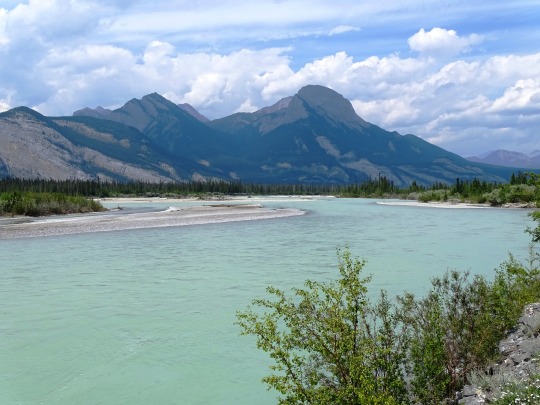

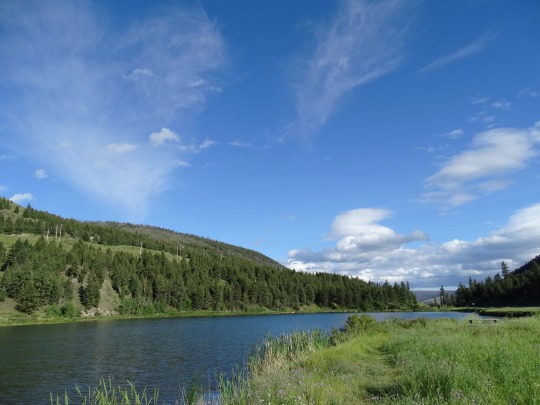
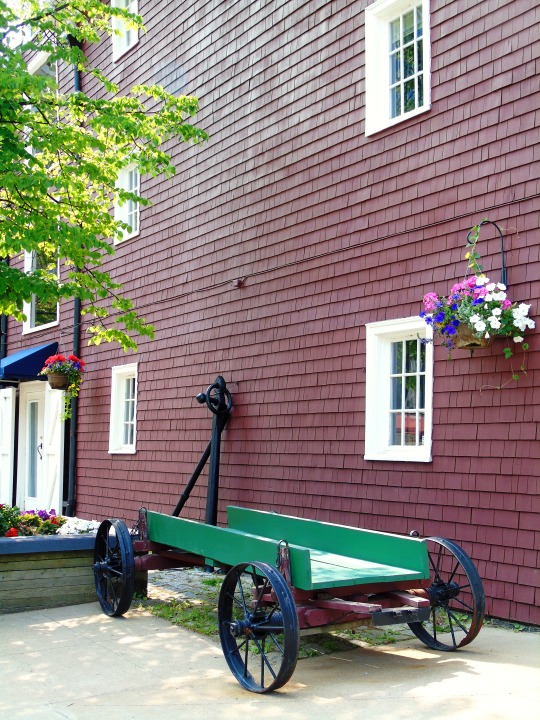



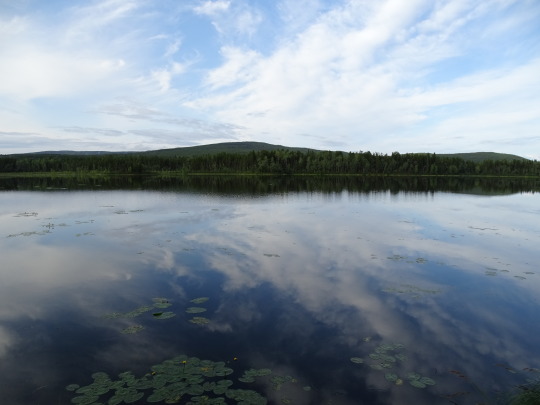

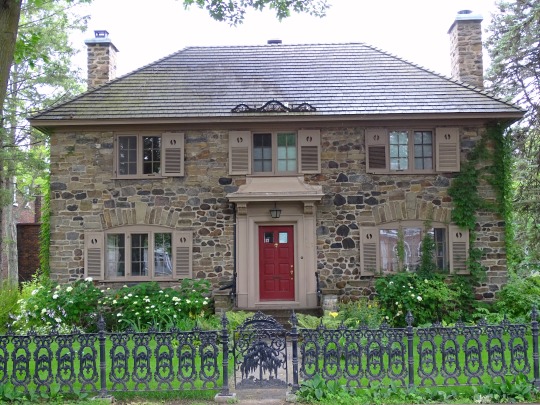


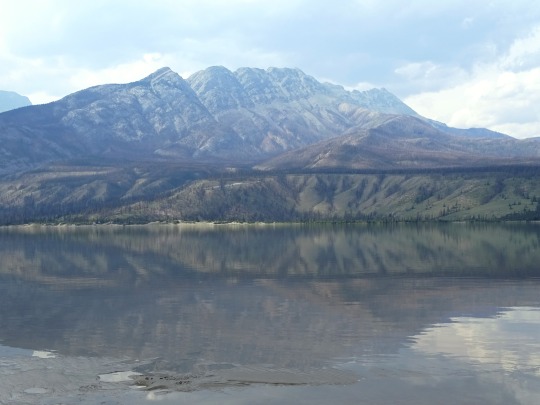






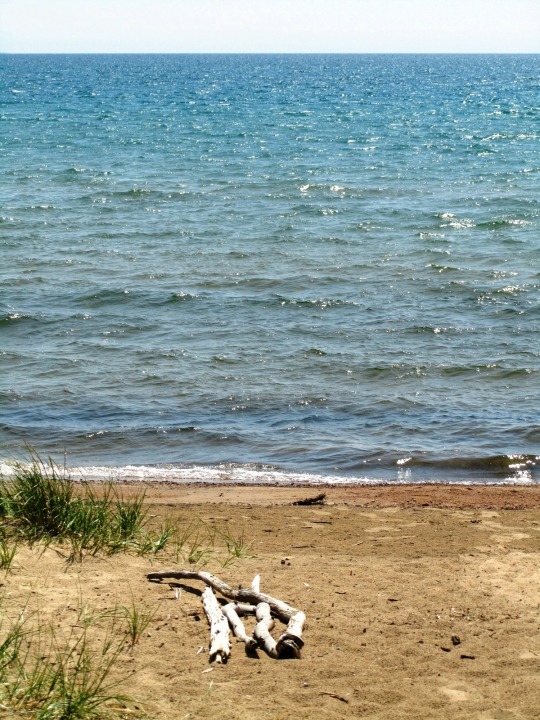
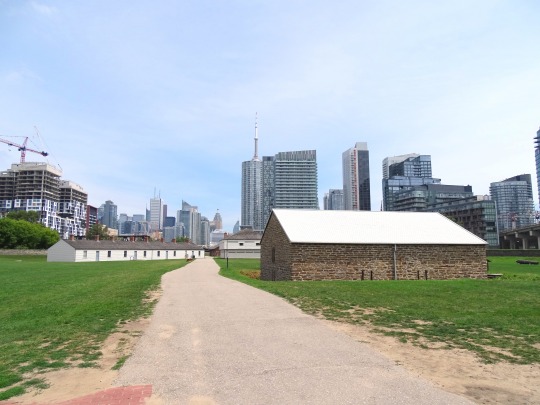


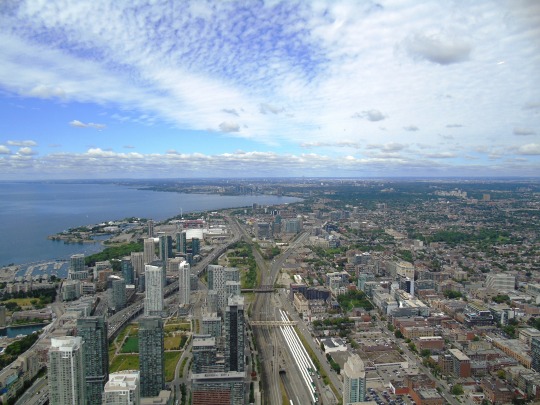
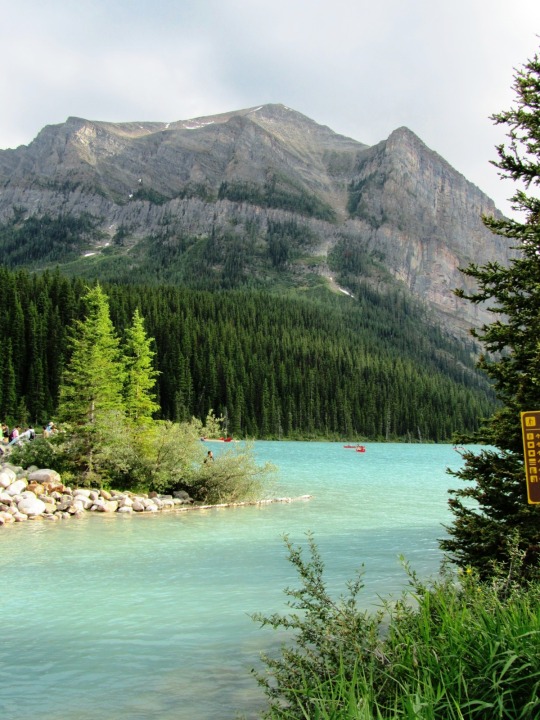
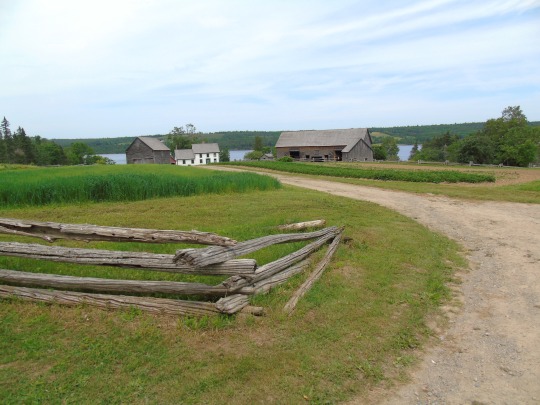
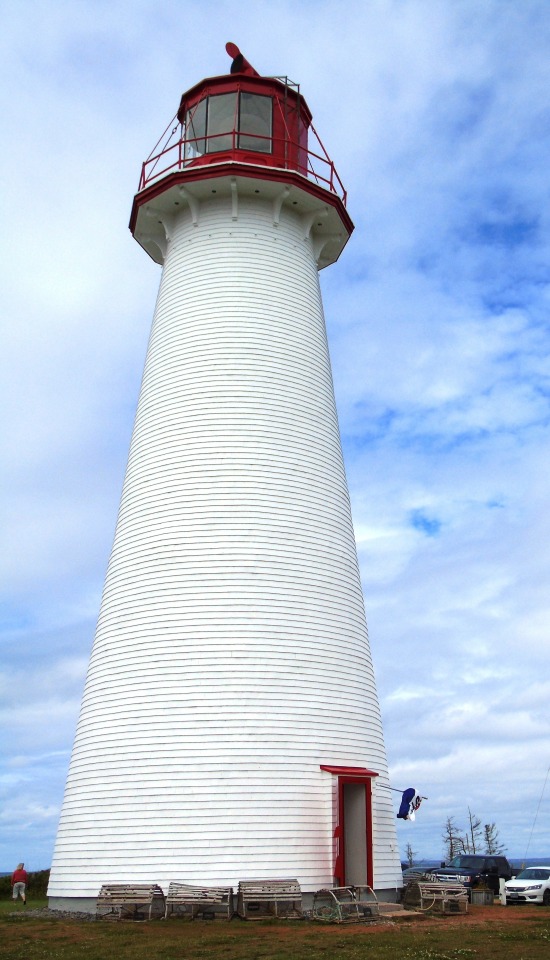



Statute of Westminster (11 December 1931) gave complete legislative independence to Canada, Australia, New Zealand, South Africa, Ireland (Free State), and Newfoundland (not then part of Canada).
Anniversary of the Statute of Westminster
The Anniversary of the Statute of Westminster is observed on December 11 every year. Although it is a holiday, Canadians still go to work, and it is pretty much an ordinary day for them. It is a nod to Canadian independence. The “Union Jack,” where logistics allow, is flown along with the Maple Leaf on federal buildings, airports, military bases from dawn to dusk to mark this day. It commemorates a British law that was passed on 11 December 1931. It was Canada’s final achievement of independence from Britain. The Statute of Westminster gave Canada and the other Commonwealth Dominions legal equality with Britain. These countries now had full legal freedom — except in areas which they chose. The Statute also defined the powers of Canada’s Parliament and those of the other Dominions. The day is mostly celebrated in Canada.
History of Anniversary of the Statute of Westminster
Before 1931, the British government had much influence over legislation passed by the Commonwealth Dominions (Canada, Australia, New Zealand, South Africa, the Irish Free State, and Newfoundland). Things began to change after the First World War — after the sacrifices of Canada and other Dominions on the battlefield stirred feelings of nationhood and desires for complete autonomy.
Canada began to assert its independence in foreign policy in the early 1920s. In 1922, Prime Minister William Lyon Mackenzie King denied help to British occupation forces in Turkey without first getting the approval of his Parliament. Later on, in 1923, Canada signed a fisheries’ treaty with the United States without seeking permission from Britain. In 1926, Canada established an embassy in Washington, DC, and Vincent Massey was named its first Canadian minister. This made him Canada’s first-ever diplomatic envoy posted to a foreign capital.
The Imperial Conference of 1926 was a more formal step. It gave legal backbone to the Balfour Report from earlier that year. The report had announced that Britain and its Dominions were constitutionally “equal in status.” The work of changing the Commonwealth’s complex legal system continued at the 1929 Conference on the Operation of Dominion Legislation. The Imperial Conference of 1930 further confirmed the need for the Dominions to have greater autonomy of their legislature. On 11 December 1931, the Statute of Westminster was passed by the British Parliament. This was done at the request and with the consent of the Dominions. This statute ratified the Dominions’ legislative independence. Although it had been granted the right to self-government in 1867, Canada did not enjoy full legal autonomy until the Statute was passed on December 11, 1931.
Anniversary of the Statute of Westminster timeline
15th and 16th Centuries Age of Discovery
Portugal and Spain pioneer European exploration of the globe, leading to the discovery of continents such as the Americas.
1757 Britain in India
Britain becomes the dominant power in the Indian subcontinent after defeating the Mughal in the Battle of Plassey.
1783 The American War of Independence
The war results in Britain losing some of its oldest and most populous colonies in North America.
1956 The Suez Crisis
The Suez Crisis confirms Britain's decline as a global power, because the Egyptian president nationalizes the Canal, owned by the Suez Canal Company, and formerly controlled by French and British interests.
Anniversary of the Statute of Westminster FAQs
Who is the current sovereign under the Statute of Westminster?
Today, the Statute of Westminster’s restrictive clause is still valid, so the current sovereign is Queen Elizabeth II. Her acting advisors are known as federal ministers of the Crown.
Which is more important: the Statute of Westminster or confederation?
The Statute of Westminster is arguably a more momentous occasion in Canada’s journey to sovereignty than to a confederation.
When did New Zealand adopt the Statute of Westminster?
The Parliament of New Zealand adopted the Statute of Westminster in November 1947.
How To Observe Anniversary of the Statute of Westminster
Explore from your armchair
Study your country’s history
Play a game such as balderdash
We have only given you brief information on the statute. Observe the anniversary by reading in detail about the statute — and things relating to it.
Britain had successfully colonized some of the biggest nations in the world. On this day, read about your country’s past — colonial or not — and try to understand how colonialism continues to affect the world today.
There are games that have categories including really strange laws from around the world, which would be fun with friends and family. While you are all laughing, remember that most laws had reasons, and have fun discussing that.
5 Facts About Canada That Will Blow Your Mind
Canadians eat the most donuts in the world
Bigfoot is legally protected in Canada
Smelling bad is illegal in Canada
The money is vision-impaired friendly
Canada has two national sports
There are only 30 million people in Canada, but over 1 billion donuts are eaten annually.
It is illegal to kill a Sasquatch in British Columbia.
Anyone smelling offensive in a public place could face two years in jail.
Canadian banknotes have braille writing on them for the blind.
Ice hockey and lacrosse are the national sports of Canada.
Why We Love the Anniversary of the Statute of Westminster
It’s a part of history
This day encourages us to explore our history
A day to learn and chat about laws
The Statute of Westminster played an important role in the history of Canada and other former dominions. The anniversary acknowledges this crucial day in history.
It’s easy to forget history when we are caught up in the hustle-bustle of our daily lives. The Anniversary of the Statute of Westminster encourages us to take a look at our history and find out more about our country’s past.
Celebrate the Anniversary of the Statute of Westminster as a day to learn about the rules, acts, and laws that are applicable in your country.
Source
#Yukon#Statute of Westminster#11 December 1931#anniversary#legislative independence#vacation#Canada#Newfoundland#Canadian history#Québec#travel#Quebec City#Ottawa#Montréal#Ontario#original photography#cityscape#landscape#Niagara Falls#Lake Ontario#Atlantic Ocean#Alberta#Lake Louise#Vancouver#British Columbia#Manitoba#Saskatchewan#New Brunswick#Nova Scotia#Pacific Ocean
3 notes
·
View notes
Text
hate talking about historical politics because there's so many people that don't know about W.L. Mackenzie King being a massive antisemite hitler-lover or the turn-of-the-(20th-)century government instating a "head tax" on chinese immigration after the railway was built
4 notes
·
View notes
Text
Events 11.22
498 – After the death of Anastasius II, Symmachus is elected Pope in the Lateran Palace, while Laurentius is elected Pope in Santa Maria Maggiore.
845 – The first duke of Brittany, Nominoe, defeats the Frankish king Charles the Bald at the Battle of Ballon near Redon.
1307 – Pope Clement V issues the papal bull Pastoralis Praeeminentiae which instructed all Christian monarchs in Europe to arrest all Templars and seize their assets.
1574 – Spanish navigator Juan Fernández discovers islands now known as the Juan Fernández Islands off Chile.
1635 – Dutch colonial forces on Taiwan launch a pacification campaign against native villages, resulting in Dutch control of the middle and south of the island.
1718 – Royal Navy Lieutenant Robert Maynard attacks and boards the vessels of the British pirate Edward Teach (best known as "Blackbeard") off the coast of North Carolina. The casualties on both sides include Maynard's first officer Mister Hyde and Teach himself.
1837 – Canadian journalist and politician William Lyon Mackenzie calls for a rebellion against the United Kingdom in his essay "To the People of Upper Canada", published in his newspaper The Constitution.
1855 – In Birmingham, England, Albert, Prince Consort lays the foundation stone of the Birmingham and Midland Institute.
1869 – In Dumbarton, Scotland, the clipper Cutty Sark is launched.
1873 – The French steamer SS Ville du Havre sinks in 12 minutes after colliding with the Scottish iron clipper Loch Earn in the Atlantic, with a loss of 226 lives.
1908 – The Congress of Manastir establishes the Albanian alphabet.
1921 – During The Troubles in Northern Ireland (1920–1922), 22 Irish Nationalists are killed in Belfast in one day.
1935 – The China Clipper inaugurates the first commercial transpacific air service, connecting Alameda, California with Manila.
1940 – World War II: Following the initial Italian invasion, Greek troops counterattack into Italian-occupied Albania and capture Korytsa.
1942 – World War II: Battle of Stalingrad: General Friedrich Paulus sends Adolf Hitler a telegram saying that the German 6th Army is surrounded.
1943 – World War II: Cairo Conference: U.S. President Franklin D. Roosevelt, British Prime Minister Winston Churchill, and Chinese Premier Chiang Kai-shek meet in Cairo, Egypt, to discuss ways to defeat Japan.
1943 – Lebanon gains independence from France, nearly two years after it was first announced by the Free French government.
1955 – The Soviet Union launches RDS-37, a 1.6 megaton two stage hydrogen bomb designed by Andrei Sakharov. The bomb was dropped over Semipalatinsk.
1963 – U.S. President John F. Kennedy is assassinated and Texas Governor John Connally is seriously wounded by Lee Harvey Oswald, who also kills Dallas Police officer J. D. Tippit after fleeing the scene. U.S Vice President Lyndon B. Johnson is sworn in as the 36th President of the United States afterwards.
1963 – Five Indian generals are killed in a helicopter crash, due to collision with two parallel lines of telegraph cables.
1967 – UN Security Council Resolution 242 is adopted, establishing a set of the principles aimed at guiding negotiations for an Arab–Israeli peace settlement.
1971 – In Britain's worst mountaineering tragedy, the Cairngorm Plateau Disaster, five children and one of their leaders are found dead from exposure in the Scottish mountains.
1975 – Juan Carlos is declared King of Spain following the death of Francisco Franco.
1990 – British Prime Minister Margaret Thatcher withdraws from the Conservative Party leadership election, confirming the end of her Prime-Ministership.
2003 – Baghdad DHL attempted shootdown incident: Shortly after takeoff, a DHL Express cargo plane is struck on the left wing by a surface-to-air missile and forced to land.
2004 – The Orange Revolution begins in Ukraine, resulting from the presidential elections.
2022 – A shooting at a Walmart in Chesapeake, Virginia leaves 7 workers dead, including the shooter, and 4 others injured.
0 notes
Text
youtube
Song of the day
(& the month*)
Set (Mackenzie / Kenny-Smith / Cavanagh / Craig / Harwood / Walker)
Snout of a jackal and a tail of a snake
Slithers and slinks through the desert, awake
Gorges on moonbeams and bathes in quantum foam
Unchallenged in the infinite unknown
Tornado bore down and lifted him high
Throwing Set around with a windy cry
His bones did shatter and his flesh did rend
But still, the god did not bend
Osirus of Geb, of Nut and dead, dutifully did what he was beset
Slay the mighty Set…
Governs sandstorms with but a gesture
Squeezing day into night with supernatural pressure
God of duality and king of the fight
Right eye the sun and left the moon's light
His followers screamed
His enemies cheered
As they watched their golden god disappear
Be unto your storm with a final breath
Set, it’s time to meet your death
Osiris of earth, of sky, and birth
Cut the cord Kill the king and reset
Slay the mighty Set…
The god of death and rebirth too
Out with the old and in with the new
Ashes to gashes
The past of new life is made
Brightened up the shadows
Light up the shade
Horus gave Set the downstairs snip, snip
Poked out his eyes and ripped it to pieces
Eighty years of conflict
Crocodile-dog-birth
Lucifer inverted
Slender usurper
Piece of work
Struggling stranglehold akin to poison and going for broke
An eye for a sun
And an eye for the moon
Love letter death threats written in the tomb
The seed is set
Cow-horn-headdress
The seed is set
Hieroglyphic
Slay the mighty Set…
(*until Oct. 27th at least)
0 notes
Text
Expert Appliance Repair Vaughan, ON
Gas Appliances Services
TSSA Certified for Comprehensive Repairs, Installations, and Maintenance
Trusted Experienced
We guarantee all repairs will be performed by our highly-qualified specialists using only brand-new, original parts.
Certified & Insured
EZFIX Appliance Repair guarantees the best service! All of our experts hold Public Liability Insurance policies to provide you with additional assurance that you are choosing the right professionals.
Competitive Prices
We guarantee no hidden fees or unexpected expenses. When you call for any repair, our experts will provide you with an estimate prior to arriving on-site. EZFIX Appliance Repair is proud to offer the most competitive prices for parts and labour!
Vaughan – an area steeped in history, culture, and infinite attractions. Located in the Greater Toronto Area, Vaughan is bounded by Caledon and Brampton to the west, King and Richmond Hill to the north, Markham and Richmond Hill to the east, and Toronto to the south.
Vaughan was named after Benjamin Vaughan, a British commissioner who signed a peace treaty with the United States in 1783. The Huron-Wendat people populated what is today Vaughan, and the first European to pass through Vaughan was the French explorer Étienne Brûlé in 1615. Vaughan Township was established in 1792 and merged with the Village of Woodbridge in 1971 to form the Town of Vaughan. In 1991, it changed its legal status to the City of Vaughan.
Vaughan’s population as of 2021 was 323,103, with a population density of 1,186.0/km. Vaughan’s median age as of 2021 was 41.6, on par with the Ontario median age of 41.6. English is the mother tongue of 45.2% of the residents of Vaughan, with Italian (9.8%), Russian (6.0%), and Mandarin (4.0%). Christianity (53.1%) is the most reported religion among the population, with Catholicism (38.6%) making up the largest denomination. Italian (26.5%), Chinese (8.5%), and Jewish (7.9%) are the top ethnic origins in Vaughan. Visible minorities make up 35.4% of the population.
Vaughan is governed by a ten-member council comprising a mayor, four regional councillors, and five local councillors. Vaughan offers a complex transportation infrastructure, including highways, public transit, regional roads, municipality-funded roads, and train services. The Vaughan Metropolitan Centre is a new city center under development around the intersection of Highway 7 and Jane Street. The Vaughan Metropolitan Centre is served by the Vaughan Metropolitan Centre subway station, which is the northwestern terminus of Line 1 Yonge–University of the Toronto subway system. Vaughan was the largest city in Canada without a hospital until the 2021 opening of Cortellucci Vaughan Hospital.
Manufacturing dominates the local economy, followed by construction, retail trade, wholesale trade, and transportation and warehousing. Small businesses with fewer than 20 employees account for 81% of all business establishments.
Major Tourism Points of Interest
Canada’s Wonderland
Village cores of Kleinburg
Edgeley
Legoland Discovery Center
McMichael Canadian Art Collection
As well as Vaughan Mills, the Kortright Centre for Conservation, Reptilia and Woodbridge.
Interesting Neighborhoods
Concord
Thornhill
Maple
Construction activity has exceeded the $1 billion mark in eight of the last ten years. Vaughan is home to 184 Canadian or regional headquarters, including Adidas Canada, GFL Environmental, Recipe Unlimited, St. Joseph Communications, Toys R Us, and Yum! Brands.
Vaughan is made up of nearly a dozen historic communities, with most residents identifying more with the larger communities than the city as a whole. Canadas Wonderland is located on the east side of Highway 400 between Rutherford Road and Major Mackenzie Drive. Vaughan Mills is a large shopping mall that opened in 2004, which includes Legoland Discovery Centre. McMichael Canadian Art Collection is located in Kleinburg. Boyd Conservation Area is a park located east of Islington Avenue, south of Rutherford Road. Baitul Islam Mosque is the headquarters of the Canadian Ahmadiyya Muslim community. Kortright Centre for Conservation is located between Rutherford Road and Major Mackenzie Drive east of Islington Avenue. Reptilia Zoo is a 25,000 sq ft Reptile Zoo and Education Centre located near Vaughan Mills. York University, a major comprehensive university, is located in North York, Ontario, on the Toronto side of the Toronto-Vaughan border. There are several elementary and high schools in Vaughan, which operate under different boards. Niagara University runs a branch campus in Vaughan.
Vaughan is home to many amateur sports teams for various sports. There are four major sports leagues in the city, with a rep and select levels of each sport. The Vaughan Vikings represent the city in baseball and softball. The Vaughan Flames is a youth organization exclusively for women’s hockey. Vaughan SC, Woodbridge SC, and Kleinburg Nobleton SC offer house league and rep programs for youth soccer. The Ontario Soccer Association, the largest sports organization in Canada, is based in Vaughan. The Canadian Soccer Hall of Fame and Museum is located in Vaughan. The semi-professional York Region Shooters from the Canadian Soccer League is based in Vaughan.
There are several newspapers in Vaughan, including the Vaughan Citizen and the Thornhill Liberal. Lo Specchio is an Italian-language newspaper published in Vaughan. City Life is a Vaughan-specific lifestyle magazine published bi-monthly.
Get Fast, Affordable Appliance Repair In VaughanAre you a homeowner in Vaughan, Ontario looking for reliable and trustworthy appliance repair services? Whether you’re dealing with a broken refrigerator, a malfunctioning dishwasher, or a leaking washing machine, you can trust EZFIX Appliance Repair to provide you with fast and affordable services.
EZFIX Appliance Repair
145 Pine Hill Cres, Aurora, ON L4G 3X9
1-888-316-7773
1 note
·
View note
Text
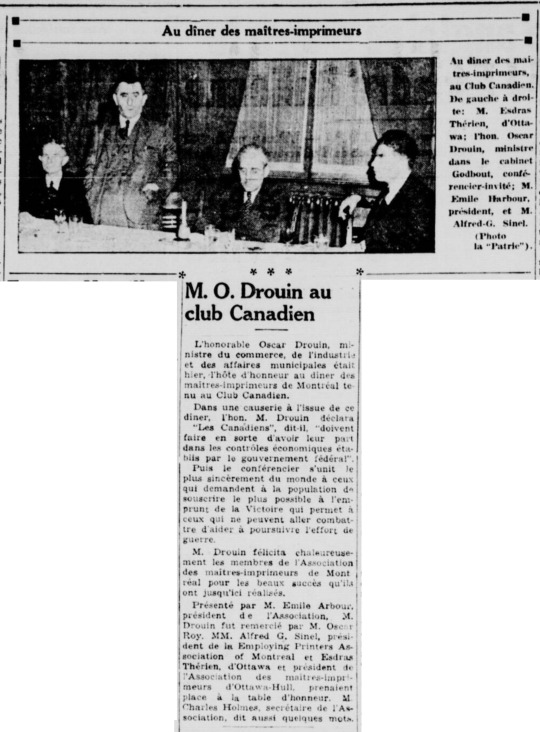
"Au dîner des maîtres-imprimeurs," La Patrie. April 20, 1943. Page 4.
---
Au diner des maîtres-imprimeurs, au Club Canadien. De gauche à droite: M. Esdras Thérien, d'Ottawa: l'hon. Oscar Drouin, ministre dans le cabinet Godbout, conférencier-invité; M. Emile Harbour, président, et M. Alfred-G. Sinel. (Photo la "Patrie").
///
M. O. Drouin au club Canadien
----
L'honorable Oscar Drouin, ministre du commerce, de l'industrie et des affaires municipales était hier, l'hôte d'honneur au dîner des maîtres-imprimeurs de Montréal tenu au Club Canadien.
Dans une causerie à l'issue de ce diner, Thon. M. Drouin déclara "Les Canadiens", dit-il, "doivent faire en sorte d'avoir leur part dans les contrôles économiques établis par le gouvernement fédéral".
Puis le conférencier s'unit le plus sincèrement du monde à ceux qui demandent à la population de souscrire le plus possible à l'emprunt de la Victoire qui permet à ceux qui ne peuvent aller combattre d'aider à poursuivre l'effort de guerre.
M. Drouin félicita chaleureusement les membres de l'Association des maîtres-imprimeurs de Mont réal pour les beaux succès qu'il ont jusqu'ici réalisés.
Présenté par M. Emile Arbour, président de l'Association, M. Drouin fut remercié par M. Oscar Roy. MM. Alfred G. Sinel, president de la Employing Printers Association of Montreal et Esdras Thérien, d'Ottawa et président de Association des maîtres-imprimeurs d'Ottawa-Hull, prenaient place à la table d'honneur. M Charles Holmes, secrétaire de l'Association, dit aussi quelques mots.
#master printers#montreal#canadian club#printing industry#printers' association#ottawa#gatineau#member of parliament#mackenzie king government#elite canadians#canada during world war 2
1 note
·
View note
Text

On 13th April 1719 a small Spanish force landed in Loch Duich, close to what is now Kyle of Lochalsh.
The little known ‘Little Rising’, saw a force of 300 Spanish soldiers land and combine with less than a thousand Highlanders, under George Keith, the 10th Earl of Marischal, William Mackenzie, the 5th Earl of Seaforth Lord George Murray and John Cameron of Lochiel.
The plan had been hatched by King Philip of Spain and Italian Cardinal Alberoni as a diversion to help in the campaign to restore Spanish power and territories ceded to the British following the Treaty of Utrecht. The Spanish force should have been much larger, but much of it had been destroyed by a storm. Added to this Highlanders did not join the Jacobites in the expected numbers, However, they made their base at Eilean Donan Castle and intended to capture Inverness.
Unfortunately, Hanoverian ships shelled the castle and the only notable battle was at Glen Shiel two months later when the Jacobites were defeated by a Government army led by General Joseph Wightman.
A wee added note to this, it was during this time that Eilean Donan was destroyed by Government ships shelling it, the ruined castle was abandoned until 1912 when it was purchased by Lieutenant-Colonel John MacRae-Gilstrap. Rebuilding was undertaken between 1914 and 1932 and it was at this time that a bridge was built to link the island to the shore.
The pic shows how the castle looked in the two centuries between these events and the restoration.
57 notes
·
View notes
Text
A look at re-elected Prince Edward Island Progressive Conservative Leader Dennis King
A look at Dennis King of Prince Edward Island's Progressive Conservatives, who led the party to a majority government Monday night.
Age: 51
Early years: King was born Nov. 1, 1971, in Georgetown, P.E.I., to Catherine (Cattie) Rachel Stevens and Lionel MacKenzie King; he has three brothers and four sisters.
Education: He graduated from Montague Regional High School in 1990, and after studying journalism in Ontario, he returned to P.E.I.
Career: King has worked for various media outlets, including as a reporter with P.E.I.'s The Eastern Graphic and The Guardian. Before starting his own public relations company in 2013, he served in several communications roles, including as communications director to former premier Pat Binns and to the Mi'kmaq Confederacy of Prince Edward Island.
Family: King married Jana Hemphill in 1999. They have three children -- Jacob, Camdyn and Callum. The couple operate Storybrook Stables, a horse farm in Brookfield, P.E.I.
Quote: "We haven't shied away from challenges over the last four years, and we're certainly not going to shy away from them for the next four years," he told supporters Monday night. "Tonight we party, tonight we celebrate. But tomorrow we get back to work rebuilding this province and making it the best place to live," King said on April 3 after his party's victory.
This report by The Canadian Press was first published April 3, 2023.
This story was produced with the financial assistance of the Meta and Canadian Press News Fellowship.
from CTV News - Atlantic https://ift.tt/f6XOCa0
0 notes
Text
Montrose in Scotland: ‘I Aim Only at Your Majesty’s Honour and Interest’
The End of the Royalist Dream

The Marquess of Montrose, portrait by Anthony van Dyck (1636). Source: Wikipedia
NASEBY MAY have permanently damaged the King’s cause in England, but the situation in Scotland was very different, where James Graham, Marquess of Montrose and his raggle taggle band of Irish Confederates, Highland rebels and Scottish Royalists, had defeated everything the Covenanters could throw at them. The Marquess’ unexpected victories had suddenly made Scotland an unlikely depository for Royalist hopes and Charles now looked to Montrose for salvation of his entire cause. Graham may have entered Charles’ northern kingdom as a folorn hope, but the exploits of this epitome of the Cavalier general were the sole bright light in the gathering darkness engulfing the King’s hopes in his war with Parliament.
In November 1644, Montrose and his Irish Confederate lieutenant, Alisdair MacColla, planned their next move. Following the sack of Aberdeen, the Royalist force had withdrawn into the Highlands to replenish its ranks through a recruitment campaign that deliberately played on clan animosities. To the Stewarts and Robertsons were added traditional enemies of the Campbells (the dominant clan in Scotland) the MacDonalds and Camerons, and MacColla’s proposed strategy took on a distinctly tribal orientation. He proposed to the Lieutenant Governor that the army launch a winter campaign deep into Campbell lands, ravaging the holdings of Archibald Campbell, the Marquis of Argyll and head of clan Campbell. Montrose was persuaded of the plan, despite its obvious logistic difficulties, because Argyll was also the leading politician in the Covenanter government, the Scottish Estates, and a successful attack on Argyll would be a victory for the King as much as it would be for clan vengeance against the Campbells. In December Montrose’s army began its march, traversing arduous peaks and inclement weather to eventually emerge in the heart of Argyll’s lands in Inverary. Argyll was caught unprepared and quite incapable of mounting a defence of his ancestral lands as the Royalist army plundered far and wide indiscriminately killing any of those they felt were guilty of rebellion, were prominent supporters of the Estates, or could be identified as Campbell notables. At Kilcumin, Montrose received word that Argyll’s army was moving north to attack the Royalists, with the intention of trapping them between his force and that of Mackenzie of Seaforth. Montrose decided to force the issue and led his 1,500 strong army on an extraordinary forced march day and night, over snow covered mountains and outflanked Argyll’s force, falling on the Covenanters at Inverlochy on 1st February 1645, taking the Campbell force entirely by surprise. Although outnumbered by two to one, the clansmen charged into the body of their opponents and put them to flight. Over half the Covenanter army was killed in the battle or its aftermath, and its commander Sir Duncan Campbell, doomed by his surname, was executed in cold blood by MacColla after the battle. Argyll himself escaped the slaughter, having previously dislocated his shoulder and had therefore boarded a ship anchored off the coast to recover: he advisedly fled by sea. The stunning victory at Inverlochy put Montrose, and by extension, the Royalist cause, in charge of the whole of the west Highlands.
The scale and nature of the defeat at Inverlochy shocked the Covenanter leadership, leading some to characterise Montrose’s success as being down to divine providence. Meanwhile Montrose marched to the north east, wishing to rouse the powerful Gordon clan to the King’s banner, with the intention of then launching an invasion of Lowland Scotland - heartland of Covenanter support - and onwards into England to join Charles. By this stage, William Baillie, one of the victors of Marston Moor, been summoned back north of the border by the Scottish Estates. Wary of the fighting skill of the Highlanders, the experienced Baillie did not initially seek battle, instead he manoeuvred his forces to block Montrose’s march either north east or south. As summer 1645 approached many of the Royalist army’s clansmen, bored with the lack of fighting and plunder, began to desert, once again depleting Montrose’s and MacColla’s numbers. Covenanter commmander, Sir John Hurry, had meanwhile moved into Gordon lands to pre-empt Montrose’s advance there. Undaunted, Montrose moved his small force at pace to support the Gordons and met Hurry’s force outside the village of Auldearn on 8th May. The resultant battle was a confused affair, fought on boggy ground with Montrose successfully fooling Hurry into thinking his army was bigger than it was. The battle was closely fought, but ultimately, ill discipline on the part of Hurry’s infantry led to a dissolution of the Covenanter line and flanking attacks from Montrose’s cavalry led to its collapse. The Covenanter army was destroyed, with 2,000 killed. Auldearn may have been a somewhat fortunate victory for the Royalists but it was no less devestating for the Covenanters than had been Inverlochy.
One of the main benefits of this victory was an immediate influx of new supporters into the Lieutenant Governor’s army, attracted to what seemed to be the new dominant force in Scotland. The Scottish Estates, now decidedly worried, insisted that Baillie engage Montrose and destroy this Irish Catholic insurgency once and for all before it turned into a full scale Highlands Royalist conquest. Baillie remained wary, particularly as the Royalist army was now reinforced with its new recruits, but he eventually drew his army up for battle at Alford on the banks of the River Don on 2nd July 1645. Montrose had drawn up his own forces in disguised positions and a feinted retreat proved too tempting for Baillie who sent his cavalry in pursuit across the bridge that forded the river. The Gordon foot and horse rose to meet them and in the ensuing melee, the Covenanter cavalry and infantry were routed. Again no quarter was given by vengeful Gordon clansmen whose laird, Lord Gordon, had been killed in the fighting. Over a thousand Covenanter soldiers were killed, the survivors retreated in disarray and Baillie offered his resignation to the Estates. This was refused and Baillie led a further force of 6,000 men to engage Montrose again, anxious to defeat him before MacColla returned with more Highlands reinforcements. The two sides met at Kilsyth on 14th August and once more Graham was triumphant, inflicting on Baillie an arguably bigger defeat than he had suffered at Alford. There was now no Covenanter army of any size to oppose the Royalists in Scotland. Montrose, having entered the country with just two followers less than two years ago, was now effectively its conqueror.
Montrose moved south, occupying Glasgow on 16th August. Edinburgh surrendered soon after and MacColla moved into Ayrshire to subdue Covenanter and Campbell forces there. Against all odds, Montrose appeared to have won Scotland for the King and he summoned a Scottish Parliament to take place on 20th October. However, Montrose’s triumph was illusory. He was incapable of securing the support of the implacable Presbyterian Church or their Lowland congregations. Equally, his army of Highlanders and Irish were getting restless, wishing to head to home to enjoy their plunder and rejoin their families. The notion that Montrose could impose loyalty to Charles on Lowland Scotland with an occupying force of outlanders and Catholics, was always far fetched. Realising this, Montrose decided to join up with Charles and headed with his depleted army to the English border. This too was a folorn plan: not only did Covenanter forces hold the north of England for the Committee of Two Kingdoms, but David Leslie was leading a strong force of 8,000 men to head the Lieutenant Governor off. On 12th September, unaware of the proximity of Leslie’s army, Montrose made camp at Philiphaugh. With lax lookouts and incomplete defences, the Royalists were ill prepared for Leslie’s surprise assault at dawn. Although his men fought bravely, they were surprised and outnumbered. Within an hour, Montrose’s last army was finally defeated. The vengeful Presbyterians ensured there would be no Royalist resurgence. The captured clan leaders were summarily executed and all Irish prisoners were massacred in an episode of religious inspired atrocity. Montrose escaped the disaster and sought refuge in the Highlands, hoping he could raise another army and repeat his extraordinary run of victories; he still had hopes of uniting with the King, but it was not to be. Just as Naseby had dashed Royalist hopes in England, so Philiphaugh ended the dreams of Royalist recovery in Scotland.
The irony of the ultimate failure of Montrose’s romantic adventure is that a desperate Charles would now look to the Scots to support his hopes, the very Covenanters who had fought him since the 1630s and finally destroyed Scottish Royalism on the field of Philiphaugh.
#english civil war#charles i of england#british history#marquess of montrose#battle of philiphaugh#civil war in scotland
1 note
·
View note
Text
New Post has been published on All about business online
New Post has been published on http://yaroreviews.info/2023/02/the-pub-bosses-that-closed-their-kitchens-to-stay-afloat
The pub bosses that closed their kitchens to stay afloat
Ypres Castle Inn
By Josh Martin
Business reporter
In the kitchen at the Ypres Castle Inn in Rye, tables and chairs are stacked where a chef used to cook meals.
Jeff Bell is one of many landlords turning away from serving food to save money on energy, wages and ingredients.
Family favourites like fish and chips, steaks and roast dinners were once hailed as money-makers for pubs.
But industry data suggests drinks-only pubs, which are owned by a chain, had stronger sales than gastropubs for every month of 2022.
Hospitality as a whole is grappling with soaring prices and staff shortages. An average of 32 pubs closed per month last year in England and Wales, according to government figures.
A kitchen used only for preparing cheeseboards, scotch eggs and charcuterie platters means Mr Bell can keep a lid on expenses.
It looks to be paying off – profits for 2022 at his independent pub were “close to the best years we had before the pandemic”, he said. December was his best month of sales on record, he added.
The restaurants shrinking their menus to survive
Regulars Bob and Jane have just finished a platter of cold cuts and open a packet of crisps.
“They do really, really good bar snacks here, ” she said.
“There are plenty of places we can get a meal, we know we can’t here, and we accommodate that,” said Bob.
Chris Parry
Chris Parry, who runs the drinks-led pub The Three Cups in Bedford bought the lease for his site from brewery company Greene King in 2021, at the end of the Covid lockdowns.
He has to buy some keg beers and ciders, and mixers off from Greene King well as pay rent.
He said while he once needed to sell £700 of food per week to break even, that figure has ballooned to around £2,500 – so he got creative.
He allows punters to order from local restaurants and eat their meals at The Three Cups with one of his brews instead.
“Ten years ago it was food, food, food – that was how we were told to make money. Now for smaller pubs it’s just not worth it,” he said.
If no one comes we close early, says pub
Back at the Ypres Castle Inn, Mr Bell said pub managers who are tied to buying alcohol from the big pub landlord companies had often switched focus to full menus as a way of having more control over their profit margins – but now the cost of that commitment has soared.
“It was expensive then. It would be utterly unaffordable now,” he said.
Mr Parry is able to sell some of the beer from his other business, Kelchner Brewery.
Behind the bar, Zoe Capsey says the trend towards craft beer and local brands has allowed the pub to attract punters.
“Having a lot of craft beers on tap is massive now. People want pale ales and all that stuff that wasn’t that popular back then, when it would be groups of old men all drinking the same pints.”
Mixed picture
Data for the industry, compiled by CGA, showed that pub revenues were back above 2019 levels, but the gains were being eaten up by soaring inflation.
Drinks-only pubs, where food might be limited to crisps or maybe a pork pie, had sales growth that outstripped those of food-led gastropubs for every month of 2022 in the ‘managed’ sub-sector where pub companies own and run the site.
Data from the CGA for the last three months of 2022, found nearly nine in ten pub closures occurred in the independent sector.
It said this indicated that even if pub managers have control over their kitchens and can shop around to bargain on wholesale drink prices, independents like the Ypres Castle Inn may be outliers going against a worrying trend.
Higher energy costs, food prices and a difficulty finding and retaining staff contributed to the closures.
Nick MacKenzie, boss of Greene King, which owns around 2,700 pubs, restaurants and hotels said it was “inevitable” that menu prices will continue to rise this year, if food inflation continues at its current level.
He told BBC Radio 5Live’s Wake Up to Money programme he understood why some smaller operators may be switching to being drinks-led.
“Particularly when you see food price inflation being what it is now,” but his company won’t be turning away from a full menu offering.
Related Topics
Pubs
More on this story
If no one comes we close early, says pub
21 December 2022
‘It was a very difficult decision to let staff go’
16 November 2022
‘Oldest pub’ shuts as licensee faces administration
5 February 2022
Pubs warning: ‘My energy bill tripled to £35,000’
30 August 2022
0 notes
Photo
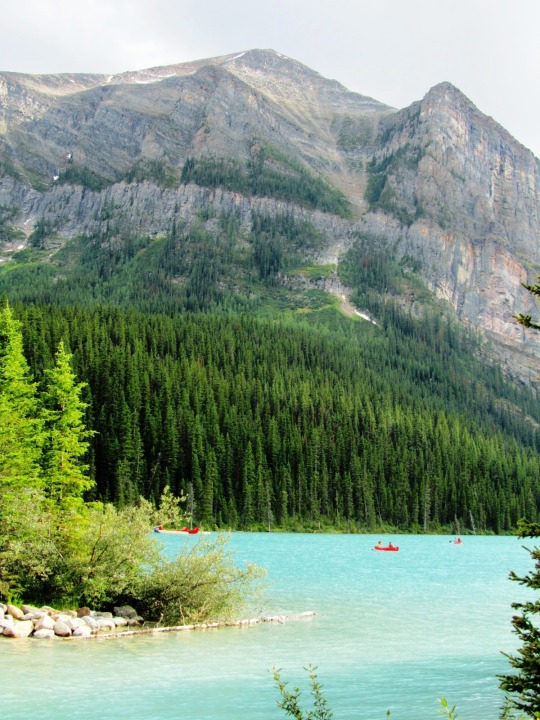
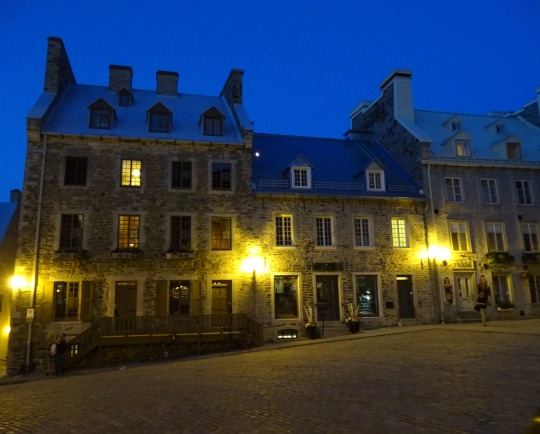


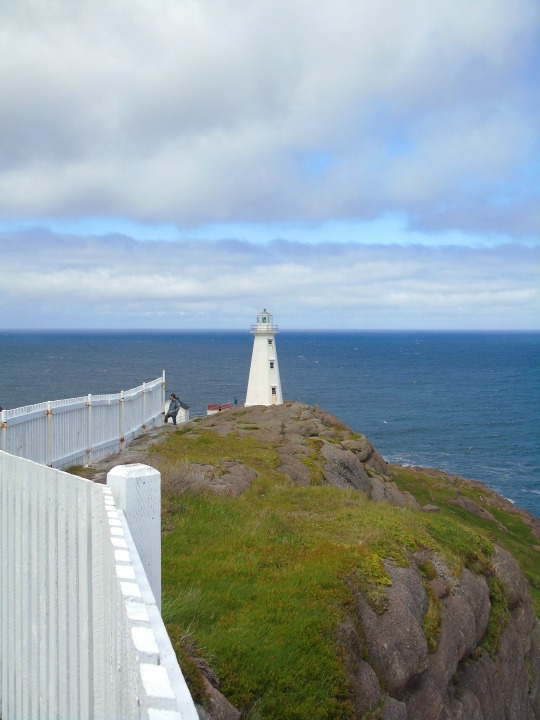




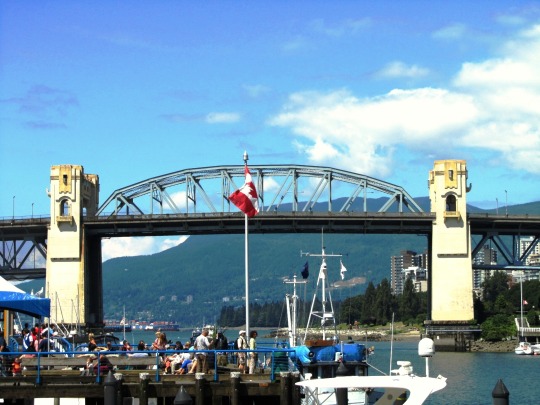
Statute of Westminster (11 December 1931) gave complete legislative independence to Canada, Australia, New Zealand, South Africa, Ireland (Free State), and Newfoundland (not then part of Canada).
Anniversary of the Statute of Westminster
The Anniversary of the Statute of Westminster is observed on December 11 every year. Although it is a holiday, Canadians still go to work, and it is pretty much an ordinary day for them. It is a nod to Canadian independence. The “Union Jack,” where logistics allow, is flown along with the Maple Leaf on federal buildings, airports, military bases from dawn to dusk to mark this day. It commemorates a British law that was passed on 11 December 1931. It was Canada’s final achievement of independence from Britain. The Statute of Westminster gave Canada and the other Commonwealth Dominions legal equality with Britain. These countries now had full legal freedom — except in areas which they chose. The Statute also defined the powers of Canada’s Parliament and those of the other Dominions. The day is mostly celebrated in Canada.
History of Anniversary of the Statute of Westminster
Before 1931, the British government had much influence over legislation passed by the Commonwealth Dominions (Canada, Australia, New Zealand, South Africa, the Irish Free State, and Newfoundland). Things began to change after the First World War — after the sacrifices of Canada and other Dominions on the battlefield stirred feelings of nationhood and desires for complete autonomy.
Canada began to assert its independence in foreign policy in the early 1920s. In 1922, Prime Minister William Lyon Mackenzie King denied help to British occupation forces in Turkey without first getting the approval of his Parliament. Later on, in 1923, Canada signed a fisheries’ treaty with the United States without seeking permission from Britain. In 1926, Canada established an embassy in Washington, DC, and Vincent Massey was named its first Canadian minister. This made him Canada’s first-ever diplomatic envoy posted to a foreign capital.
The Imperial Conference of 1926 was a more formal step. It gave legal backbone to the Balfour Report from earlier that year. The report had announced that Britain and its Dominions were constitutionally “equal in status.” The work of changing the Commonwealth’s complex legal system continued at the 1929 Conference on the Operation of Dominion Legislation. The Imperial Conference of 1930 further confirmed the need for the Dominions to have greater autonomy of their legislature. On 11 December 1931, the Statute of Westminster was passed by the British Parliament. This was done at the request and with the consent of the Dominions. This statute ratified the Dominions’ legislative independence. Although it had been granted the right to self-government in 1867, Canada did not enjoy full legal autonomy until the Statute was passed on December 11, 1931.
Anniversary of the Statute of Westminster timeline
15th and 16th Centuries Age of Discovery
Portugal and Spain pioneer European exploration of the globe, leading to the discovery of continents such as the Americas.
1757 Britain in India
Britain becomes the dominant power in the Indian subcontinent after defeating the Mughal in the Battle of Plassey.
1783 The American War of Independence
The war results in Britain losing some of its oldest and most populous colonies in North America.
1956 The Suez Crisis
The Suez Crisis confirms Britain's decline as a global power, because the Egyptian president nationalizes the Canal, owned by the Suez Canal Company, and formerly controlled by French and British interests.
Anniversary of the Statute of Westminster FAQs
Who is the current sovereign under the Statute of Westminster?
Today, the Statute of Westminster’s restrictive clause is still valid, so the current sovereign is Queen Elizabeth II. Her acting advisors are known as federal ministers of the Crown.
Which is more important: the Statute of Westminster or confederation?
The Statute of Westminster is arguably a more momentous occasion in Canada’s journey to sovereignty than to a confederation.
When did New Zealand adopt the Statute of Westminster?
The Parliament of New Zealand adopted the Statute of Westminster in November 1947.
How To Observe Anniversary of the Statute of Westminster
Explore from your armchair
Study your country’s history
Play a game such as balderdash
We have only given you brief information on the statute. Observe the anniversary by reading in detail about the statute — and things relating to it.
Britain had successfully colonized some of the biggest nations in the world. On this day, read about your country’s past — colonial or not — and try to understand how colonialism continues to affect the world today.
There are games that have categories including really strange laws from around the world, which would be fun with friends and family. While you are all laughing, remember that most laws had reasons, and have fun discussing that.
5 Facts About Canada That Will Blow Your Mind
Canadians eat the most donuts in the world
Bigfoot is legally protected in Canada
Smelling bad is illegal in Canada
The money is vision-impaired friendly
Canada has two national sports
There are only 30 million people in Canada, but over 1 billion donuts are eaten annually.
It is illegal to kill a Sasquatch in British Columbia.
Anyone smelling offensive in a public place could face two years in jail.
Canadian banknotes have braille writing on them for the blind.
Ice hockey and lacrosse are the national sports of Canada.
Why We Love the Anniversary of the Statute of Westminster
It’s a part of history
This day encourages us to explore our history
A day to learn and chat about laws
The Statute of Westminster played an important role in the history of Canada and other former dominions. The anniversary acknowledges this crucial day in history.
It’s easy to forget history when we are caught up in the hustle-bustle of our daily lives. The Anniversary of the Statute of Westminster encourages us to take a look at our history and find out more about our country’s past.
Celebrate the Anniversary of the Statute of Westminster as a day to learn about the rules, acts, and laws that are applicable in your country.
Source
#Statute of Westminster#11 December 1931#anniversary#legislative independence#vacation#Canada#Newfoundland#Canadian history#Québec#travel#Quebec City#Ottawa#Montréal#Ontario#original photography#cityscape#landscape#summer 2018#2015#2012#Niagara Falls#Lake Ontario#Cape Spear#Atlantic Ocean#Banff National Park#Alberta#Lake Louise#Dinosaur Provincial Park#Vancouver#British Columbia
1 note
·
View note